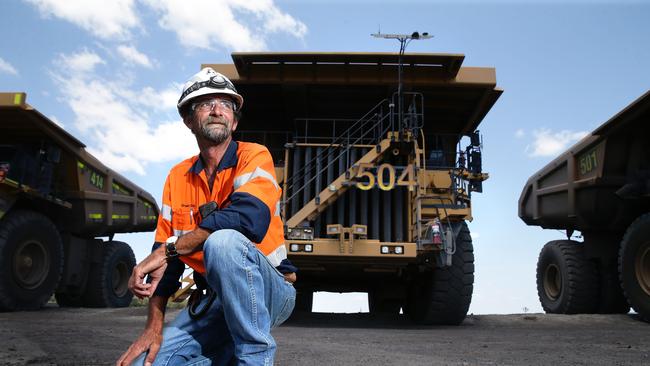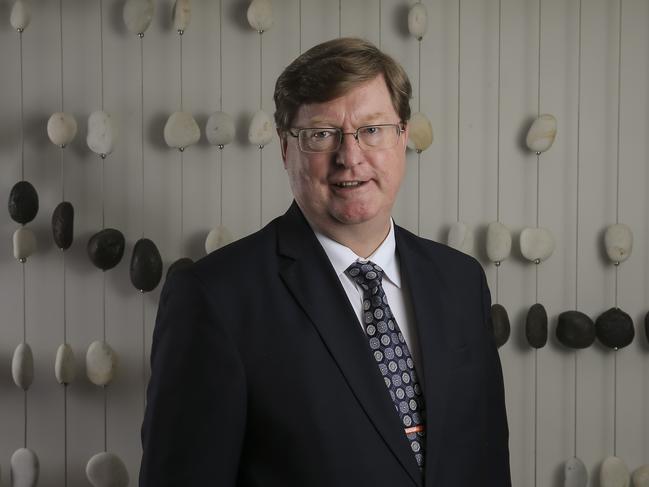Chance for wealth waiting to be seized
Billions of dollars and thousands of jobs are going by the wayside due to the inability of coal industry to expand, New Hope’s Shane Stephan says.

Billions of dollars of revenue and thousands of jobs are going by the wayside due to the inability of coal industry to expand, New Hope Group chief executive Shane Stephan says.
Stephan, who oversees a company with mines in Queensland and NSW that produced more than 4.6 million tonnes in the past six months, says he is increasingly frustrated by the difficulties in growing production to meet strong coal demand out of Asia.
Thermal coal prices, he says, have broadly doubled since 2016, yet thermal coal exports out of Australia have barely budged.
Stephan says the increased difficulty for companies trying to secure necessary approvals to develop new mines and expand existing operations means Australia is missing out on the full benefits of strong international coal prices.
New Hope is experiencing that first-hand with its plans for the continuation of its New Acland mine in Queensland.
The company’s application for stage three of New Acland has now been in the approvals process for almost 11 years.
“The lost opportunity over time will involve billions of dollars of revenue, hundreds of millions of dollars of royalties and thousands of jobs. And that’s over the next five years,” Stephan tells The Australian.

“The opportunity is here and now, and if we don’t take it up it will have a material impact on the living standards of Australians, particularly on the east coast.”
Data from the Australian Bureau of Statistics earlier this year showed that coal had overtaken iron ore as the nation’s single most valuable export. But that rise was driven primarily by price, rather than volume.
There are plenty of coal projects that could come online today, Stephan says, but red tape has slowed the pace of development in the industry and the delivery of the associated economic multipliers that accompany that growth.
In mid-March the proposed Stage Three expansion was finally awarded environmental authority by the Queensland Department of Environment and Science, but the project still needs to secure the grant of a mining lease and a water licence. The company is also awaiting the result of an appeal against the project from environmental opponents.
Stephan, a veteran of the coal industry, says there has been a marked increase in “lawfare” from well-funded and well-coordinated environmental groups, as well as an increase in the technical and legal complexity of the approvals process.
“We are being hit as an industry by a significant volume of new legislation which is exceptionally demanding to navigate through. It’s exceedingly complex and exceedingly expensive,” he said.
The concerns were echoed in the Mineral Council of Australia’s most recent pre-budget submission, with the lobby group repeating its call for a “one-stop shop” for environmental approvals.
The MCA wants the reforms to eliminate replication between state and federal approval processes as well as prevent “vexatious” legal challenges to approved projects.
“Delays and uncertainty in project approval processes caused by unnecessarily complex and duplicative processes pose a significant risk to the mining industry’s global competitiveness,” the MCA submission said.
“The delay costs for projects can be substantial. A one-year delay can reduce the net present value of a major mining project by up to 13 per cent and cost up to $1 million every day.”
The MCA also cited modelling from the Productivity Commission that estimated that improvements in the way major projects were assessed could save the economy around $240 million.
“Investors need confidence that complex construction projects with long lead times will not be rendered uncommercial by tortuous government approvals processes,” the MCA said.
“Major project proponents in Australia must already overcome a mountain of red and green tape, including duplicated federal and state approvals processes and multiple vexatious legal challenges to successful approvals.”
The increasing hurdles for new projects come at a time when coal demand from Asia is strong. The International Energy Agency late last year noted that global coal demand had risen for a second straight year in 2018 and was forecast to remain stable over the next five years, even amid declines in demand in Europe and North America.
Those falls, the IEA said, were being offset by strong growth in coal demand in India and Southeast Asia.
Coal’s share of the global energy mix is expected to dip from 27 per cent to 25 per cent by 2023 under the IEA’s forecasts.
Coal demand in Asia is growing, the IEA says, because of its affordability and availability.
India, Indonesia, Vietnam, Philippines, Malaysia and Pakistan are all seeing a “significant” increase in demand.
“The story of coal is a tale of two worlds with climate action policies and economic forces leading to closing coal power plants in some countries, while coal continues to play a part in securing access to affordable energy in others,” IEA Director of Energy Markets and Security Keisuke Sadamori says.
“For many countries, particularly in South and Southeast Asia, it is looked upon to provide energy security and underpin economic development.”
Stephan says the continued investment in the new generation of coal-fired power in Asia should underpin the coal industry well into the future.
“We’re seeing a fantastic market opportunity in Asia for increasing demand for high quality, low sulphur, low ash coal,” he says.
“Our customers are continuing to build out new high efficiency low-emission coal-fired power stations. They’re multi-billion-dollar investments, 30-year-plus investments, so I’m seeing a situation in the long term where if there is not new capacity being brought on progressively over the next couple of years, by the mid-2020s we will be missing out on a great opportunity.”


To join the conversation, please log in. Don't have an account? Register
Join the conversation, you are commenting as Logout